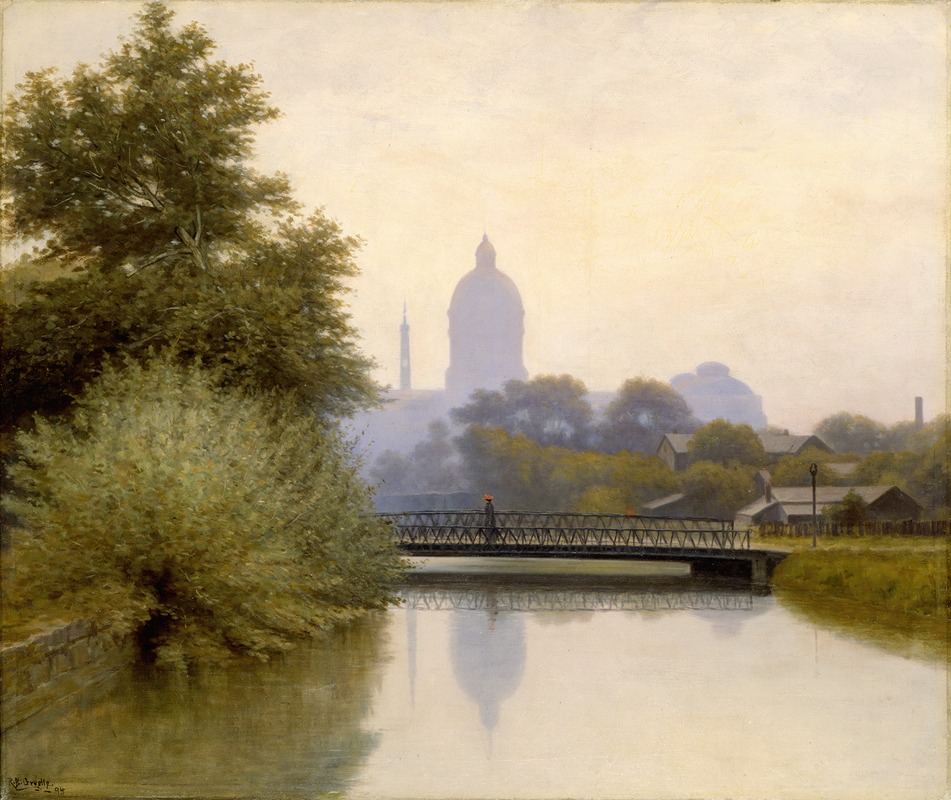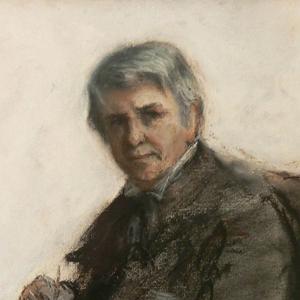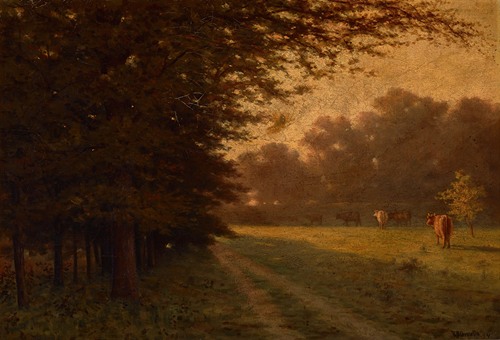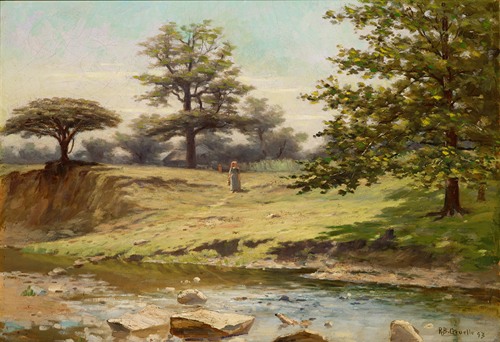

Richard Buckner Gruelle was an American Impressionist painter, illustrator, and author, who is best known as one of the five Hoosier Group artists. Gruelle's masterwork is The Canal—Morning Effect (1894), a painting of the Indianapolis, Indiana skyline, but he is also known for his watercolors and marine landscapes of the Gloucester, Massachusetts, area. In 1891 Indiana poet James Whitcomb Riley commissioned Gruelle to illustrate two of his more notable poems, "When the Frost is on the Punkin'" and "The Old Swimmin' Hole," which were published in Neighborly Poems (1891). Gruelle is also the author of Notes, Critical and Biographical: Collection of W. T. Walters (1895), which provides a detailed description of Baltimore industrialist William Thompson Walters's extensive art collection.
Born in Cynthiana, Kentucky, the self-taught artist is the only one of the Hoosier Group painters without European training. Gruelle grew up in Arcola, Illinois, apprenticed as a house and sign painter, and established his first studio in Decatur, Illinois, where he began by painting portraits and domestic scenes before turning to landscapes. Gruelle relocated to Indianapolis, Indiana, in 1882 to pursue a career as a full-time landscape painter. Gruelle also made extended sketching trips to the East Coast of the United States. Gruelle and his wife moved to Norwalk, Connecticut, in 1910. Gruelle was a member of several arts organizations, including the Art Association of Indianapolis (forerunner to the present-day Indianapolis Museum of Art), the New Canaan Society of Artists, the Society of Western Artists, and the Knockers, an East Coast art group. Although he only occasionally exhibited his art in national exhibitions, one a notable exception was the Louisiana Purchase Exposition at Saint Louis, Missouri, in 1904.
Gruelle's eldest son, Johnny Gruelle (1880–1938), became a commercial artist, illustrator, and author, who is best known as the creator of the Raggedy Ann doll and related books and illustrations.


